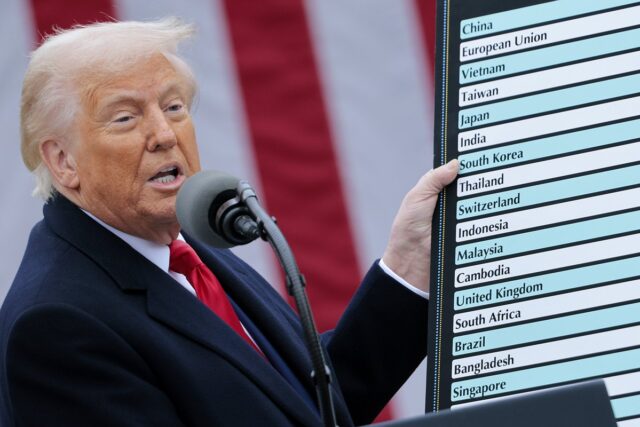The global trade landscape is shifting once again as President Donald Trump’s tariff policies spark reactions worldwide. In the latest developments, the European Union has decided to put its retaliatory tariffs on hold following a surprise U.S. announcement, while the U.S. House of Representatives has adopted a Republican-led budget plan tied to Trump’s economic agenda. Here’s everything you need to know about these fast-moving events and what they mean for trade, politics, and your wallet.
E.U. Pauses Retaliatory Tariffs: A Temporary Truce?
On Wednesday, President Trump announced a 90-day pause on most of his sweeping “reciprocal” tariffs, which had threatened to impose duties as high as 29% on dozens of trading partners. This unexpected pivot came after days of market turmoil and mounting pressure from allies like the European Union, Canada, and Japan. While tariffs on China were hiked to a staggering 145%, the White House clarified that a baseline 10% tariff would remain on most other nations during this cooling-off period.
The E.U., a key U.S. trading partner with an annual trade volume of $1.5 trillion, responded swiftly. European Commission President Ursula von der Leyen announced that the bloc would pause its planned countermeasures—valued at up to $28 billion—on U.S. goods like bourbon, motorcycles, and poultry. “We want to give negotiations a chance,” von der Leyen said in a statement on X, emphasizing the E.U.’s preference for dialogue over escalation. However, she warned that if talks falter, the retaliatory tariffs could snap back into place.
This decision reflects a delicate balancing act for the E.U. With its economy already sluggish, the bloc aims to avoid a full-blown trade war that could spike consumer prices and threaten jobs. Analysts suggest the pause is a strategic move to pressure Trump into a broader deal, possibly revisiting von der Leyen’s earlier “zero-for-zero” tariff proposal on industrial goods. For now, European leaders are breathing a sigh of relief—but the clock is ticking.
House Adopts GOP Budget: Trump’s Agenda Gains Steam
Meanwhile, in Washington, D.C., the House of Representatives took a significant step toward cementing Trump’s economic vision. After intense negotiations and a last-minute push from GOP leadership, the House passed a Republican budget resolution on Wednesday. This blueprint unlocks the reconciliation process, allowing Congress to fast-track Trump’s priorities—think tax cuts, increased defense spending, and immigration enforcement—without needing Democratic votes.
House Speaker Mike Johnson (R-La.) hailed the vote as a win for Trump’s “America First” policies, despite resistance from conservative hard-liners who initially balked at the plan’s cost. The budget’s passage came hours after Trump’s tariff pause announcement, signaling a dual-track approach: aggressive trade tactics abroad and bold fiscal moves at home. With the Senate expected to follow suit, the GOP is betting that tariffs and tax cuts will supercharge U.S. manufacturing and economic growth.
Critics, however, warn of turbulence ahead. Economists point out that tariffs could raise consumer prices—hitting lower-income households hardest—while the budget’s tax cuts might balloon the national debt. Democrats, sidelined by the reconciliation maneuver, argue it’s a risky gamble that prioritizes political wins over economic stability.
What’s Next for Trump’s Tariffs and the Global Economy?
The tariff pause has sparked a rollercoaster on Wall Street. After plunging earlier this week, the S&P 500 soared 9% on Wednesday—one of its biggest single-day gains ever—reflecting investor relief. Yet uncertainty lingers. Will the 90-day window lead to meaningful trade deals, or is it just a breather before the next salvo? China’s response—doubling down with 84% tariffs on U.S. goods—suggests the trade war with Beijing is far from over.
For everyday Americans, the stakes are personal. Tariffs could mean higher prices for everything from shoes to electronics, especially if retaliation resumes. On the flip side, Trump and his allies argue that protecting U.S. industries will bring jobs back home—a promise that resonates with his base.
As the E.U. and U.S. gear up for talks, and Congress hashes out the GOP budget’s details, one thing is clear: Trump’s tariff strategy is keeping the world on edge. Stay tuned for more live updates as this story unfolds.


